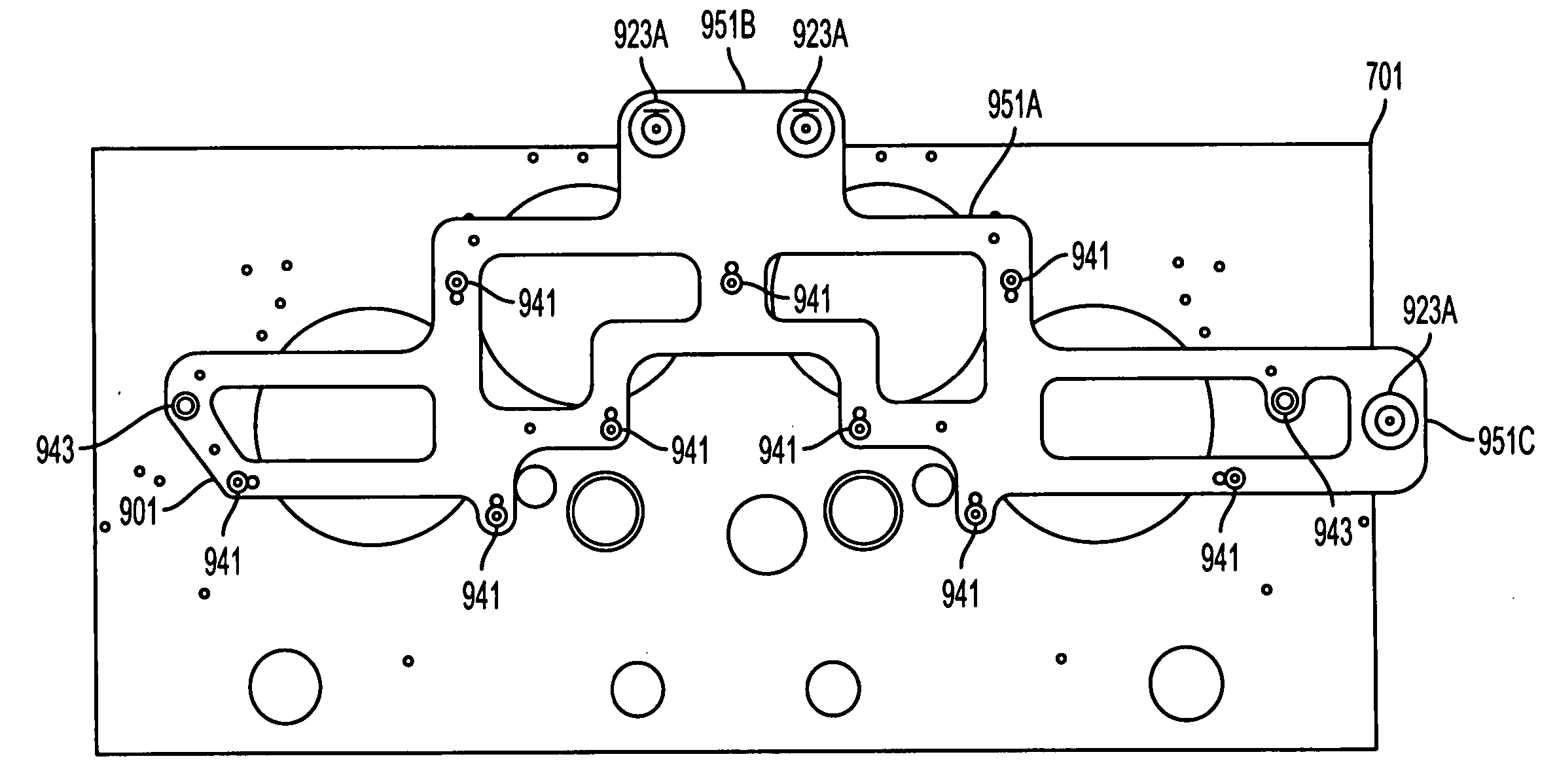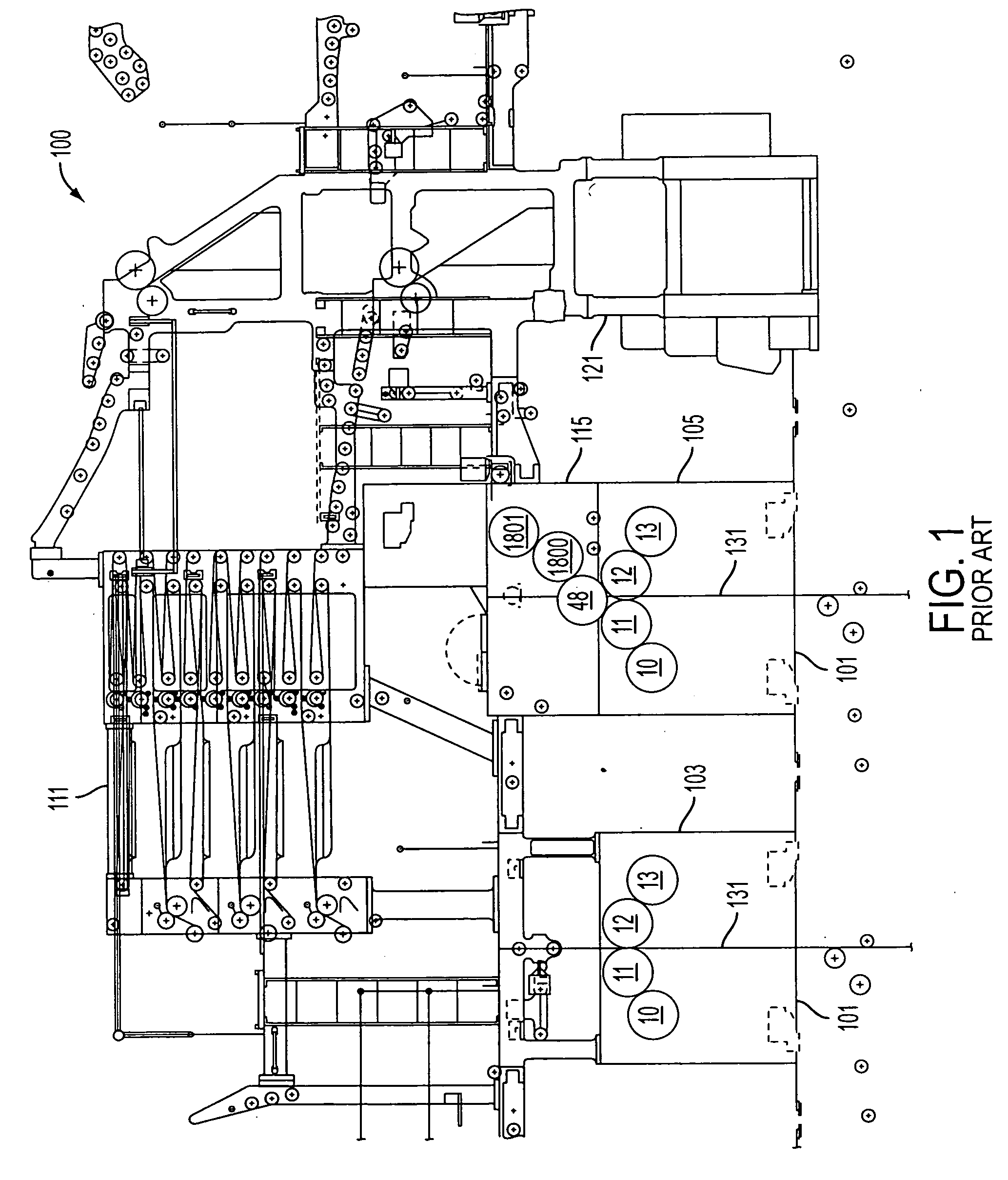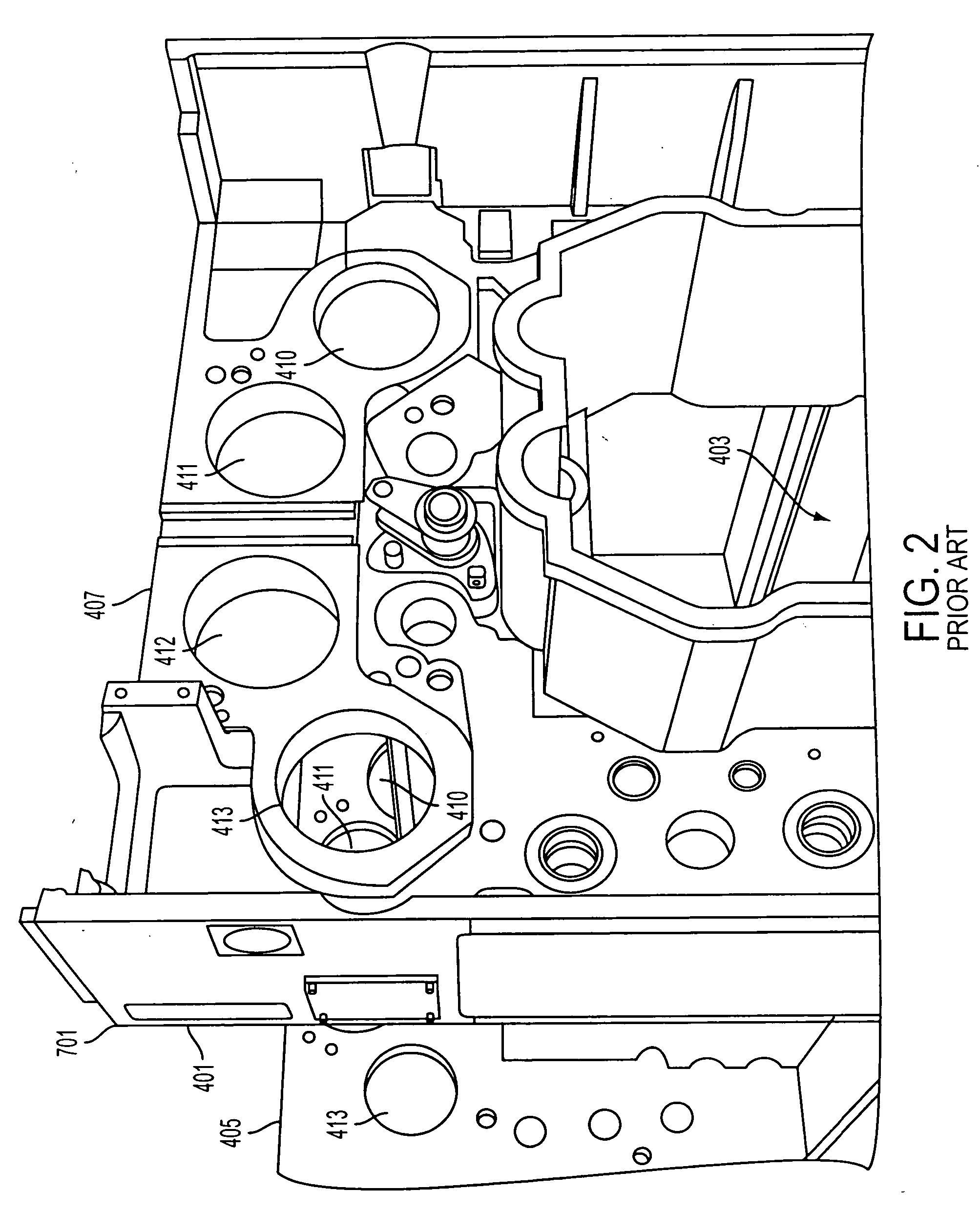Systems and methods for newspaper press cut-off reduction
a technology for newspaper presses and cutting-offs, applied in printing presses, office printing, printing, etc., can solve the problems of newspaper uneasy about, the most significant cost of newspaper operation, and the cost of raw newsprint,
- Summary
- Abstract
- Description
- Claims
- Application Information
AI Technical Summary
Benefits of technology
Problems solved by technology
Method used
Image
Examples
Embodiment Construction
)
[0049] While the embodiments described below discuss the systems and methods used in the modification of existing printing presses having an existing cut-off of 21½″, 22″, 22¾″, or 23{fraction (9 / 16)}″ being adapted to have a cut off of 21″ or less, one of ordinary skill in the art would understand that these systems and methods could be used which are designed to reduce the cut-off length of any original cut-off length press unit to any other value. Further, the systems and methods could also be used to increase the cut-off length if such an increase was desired.
[0050] The discussion below will also discuss modifications made to the frame of a press unit. This discussion presumes that the frame of the unit is accessible and that any coverings or casings from the press unit have previously been removed in a manner known to one of ordinary skill in the art and that the press being modified is suitably accessible to perform these modifications on. For this reason, all drawings herei...
PUM
 Login to View More
Login to View More Abstract
Description
Claims
Application Information
 Login to View More
Login to View More - R&D
- Intellectual Property
- Life Sciences
- Materials
- Tech Scout
- Unparalleled Data Quality
- Higher Quality Content
- 60% Fewer Hallucinations
Browse by: Latest US Patents, China's latest patents, Technical Efficacy Thesaurus, Application Domain, Technology Topic, Popular Technical Reports.
© 2025 PatSnap. All rights reserved.Legal|Privacy policy|Modern Slavery Act Transparency Statement|Sitemap|About US| Contact US: help@patsnap.com



